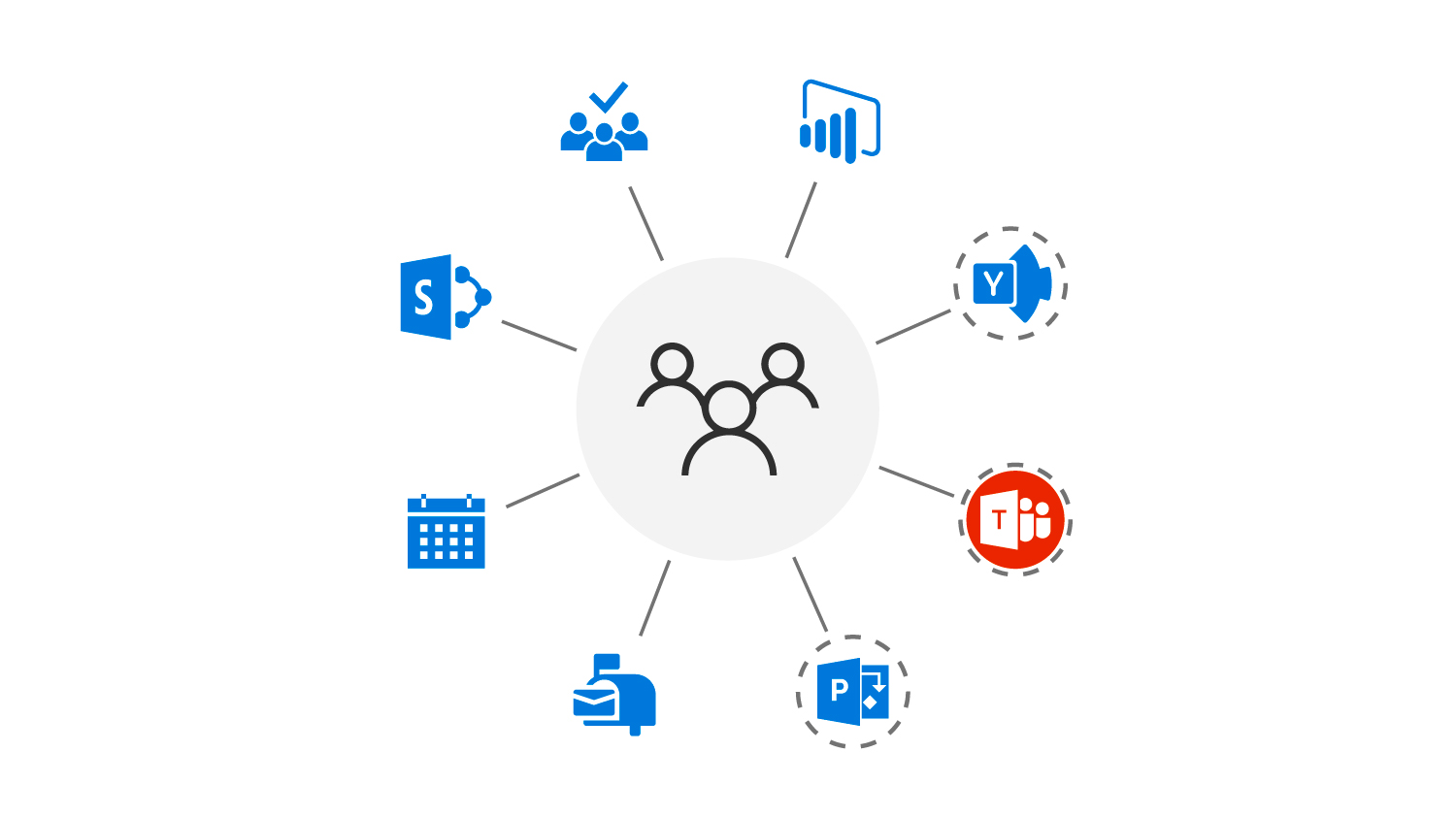Analyze the Microsoft Teams infrastructure
Microsoft Teams brings together the full breadth and depth of Microsoft 365 to provide a true chat-based hub for teamwork. This design gives customers the opportunity to create a more open, fluid, and digital environment. Microsoft Teams is built on existing Microsoft technologies woven together by Microsoft 365 Groups.
Teams provides a persistent chat capability, along with calling and meetings. It also provides, easy access to other components of Microsoft 365, and a robust extensibility story. These integrated features provide a hub for teamwork that's appropriate for enterprise companies, small organizations, and everyone in between.
Teams' capabilities are extended by using connectors, tabs, and bots, all of which are available as apps. These features bring external information, content, and intelligent bot interaction to Teams.
Overview of Microsoft Teams
Microsoft Teams can implement a Microsoft 365 group, a SharePoint Online site (complete with a document library), and an Exchange Online group mailbox. Teams uses these features to store information such as documents, videos, and other resources. A team can be created using existing Microsoft 365 Groups, allowing existing group memberships and contents stored in SharePoint Online and Exchange Online to be available within Teams.
Teams also provides a meeting experience built on the next generation, cloud-based infrastructure that's also used by Skype and Skype for Business. This design enables Teams to provide a persistent chat board where informal, real-time conversations can take place. Microsoft's technology investments in this area include Azure-based cloud services for media processing and signaling, H.264 video codec, SILK and Opus audio codec, network resiliency, and quality diagnostics.
Microsoft 365 groups use identities stored in Microsoft Entra ID. As such, all authentication capabilities in Microsoft Entra ID, such as support for multifactor authentication (MFA), are readily available for use by Teams.

Using teams and channels to collaborate in Microsoft Teams
Microsoft Teams enables individual teams to self-organize and collaborate across business scenarios.
Teams. A team is designed to bring together a group of people who work closely to get things done. A team is typically a collection of people, content, or tools that's created to work on a project within an organization.
- A private team is closed to only invited users.
- A public team is open to anyone within the organization (up to 10,000 members).
A team can be dynamic for project-based work (for example, launching a product, creating a digital war room). A team can also be an ongoing entity, to reflect the internal structure of your organization (for example, departments and office locations). Conversations, files, and notes across team channels are only visible to members of the team.
Channels. A channel is a dedicated section within a team to keep conversations organized by specific topics, projects, or disciplines. Files that you share in a channel (on the Files tab) are stored in SharePoint.
- Channels are places where conversations happen and where the work actually gets done. Channels can be open to all team members or, if an organization needs a more select audience, they can be private. Standard channels are for conversations that everyone in a team can participate in. Private channels limit communication to a subset of people in a team.
- Channels are most valuable when extended with apps that include tabs, connectors, and bots that increase their value to the members of the team. To learn more, see Apps, bots, & connectors in Teams.
Additional reading. For more information on Teams, see the following articles:
- To learn about standard guidelines, news, and trends directly from the team behind Microsoft Teams, see the Microsoft Teams’ blog.
- For more information on Microsoft's vision for Intelligent Communications, see A new vision for intelligent communications in Office 365.
- For more information on collaborating within Microsoft Teams, see How SharePoint Online and OneDrive for Business interact with Teams.
Exercise – Interactive demonstrations
Select the following links to complete these interactive demonstrations:
- Manage global meeting policy
- Manage messaging policies
- Create a resource account
- Create a call queue
- Manage Teams settings
These simulations guide you through the steps to complete various management tasks in the Teams admin center for the fictitious Adatum Corporation.
Knowledge check
Choose the best response for the following question. Then select “Check your answers.”